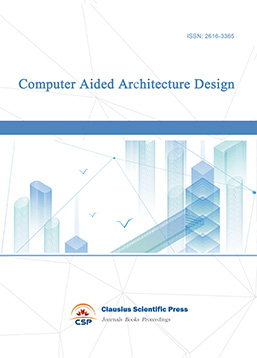Analysis of Landslide Damage Mechanisms and Control Options for Binary Structures under Heavy Rainfall Conditions
DOI: 10.23977/jceup.2022.040304 | Downloads: 19 | Views: 1444
Author(s)
Xu Feng 1, Shuangyang Cai 1, Ming Zhou 1
Affiliation(s)
1 Hunan Institute of Traffic Engineering, Hengyang, China
Corresponding Author
Xu FengABSTRACT
According to statistics, more than 90% of landslide accidents are closely related to the action of water. To determine the damage mechanism of binary structure landslide under rainfall conditions, the numerical model of binary structure slope under strong rainfall conditions is established by the finite element software Midas-GTS, relying on the slope project of an industrial park in Hunan. By studying the changes in stability safety factor, stress field, and seepage field of the slope in the process of heavy rainfall, the damage mechanism of the binary structure slope under the condition of heavy rainfall is analyzed and deduced. The results show that the damage of binary structure landslide can be divided into four evolutionary processes: (1) Nurturing stage: After excavation and slope cutting, the strongly weathered layer and part of the medium weathered layer of mudstone are exposed to the air, and the rocks will be deformed after long-term weathering and water immersion, resulting in the reduction of their strength; (2) Cracking stage: As time passes, surface water continues to penetrate downward along the fissures and soil traps, resulting in the formation of multiple penetrating fissures inside the soil body. formation of multiple penetrating fissures; (3) Creep phase: Frequent heavy rainfall causes the geotechnical body to gradually saturate, the overlying load continues to increase, the driving force of the landslide also continues to increase, the mudstone further softens, the geotechnical body shear strength decreases, and the slip zone gradually develops downward; (4) Sliding phase: Long-term precipitation causes the geotechnical body near the slip surface shear strength decreases, insufficient to support the upper load, the slip surface gradually develops through (4) Sliding stage: Long-term precipitation causes the shear strength of the geotechnical body near the slip surface to decrease, which is insufficient to support the upper load, and the slip surface gradually develops through.
KEYWORDS
Slope engineering, heavy rainfall, binary structures, landslide damage mechanism, finite element simulationCITE THIS PAPER
Xu Feng, Shuangyang Cai, Ming Zhou, Analysis of Landslide Damage Mechanisms and Control Options for Binary Structures under Heavy Rainfall Conditions. Journal of Civil Engineering and Urban Planning (2022) Vol. 4: 23-31. DOI: http://dx.doi.org/10.23977/jceup.2022.040304.
REFERENCES
[1] Cao Songjie, Gao Jin, Wu Boqiang, Zhang Chao. Analysis of damage mechanism and prevention measures of landslide No.3 of Friendship Bridge in Zhangmu Town, Tibet. Roadbed Engineering, 2021 (05): 219-225. DOI:10.13379/j.issn.1003-8825.202008009.
[2] Wang Jiao, Hu Duiwen, He Kun, Cao Xichao. Numerical simulation of the deformation and damage mechanism of the landslide in Yangyuan County Glass Village based on Flac-3D. Geological Hazards and Environmental Protection, 2021, 32 (03): 11-17.
[3] Zhao Yonghui. Study on the characteristics of landslide development and damage mechanism of Yarlung Tsangpo River Highway. Highway, 2021, 66 (04): 6-10.
[4] Sun Y., Liu X. Stability analysis and design optimization of coal road graben slopes. People's Changjiang, 2020, 51 (S2):104-107. DOI: 10.16232/j.cnki.1001-4179.2020.S2.025.
[5] Li Zhiqiang, Xue Yiguo, Li Shucai, Zhang Lewen, Wang Dan, Li Bin, Zhang Wen, Ning Kai, Zhu Jianye. Deformation features and failure mechanism of deformation features and failure mechanism of steep rock slope under the mining activities and rainfall. Journal of Mountain Science, 2017, 14 (01): 31-45.
[6] Xu Jian, Wang Zhangquan, Ren Jianwei, Wang Songhe, Jin Long. Mechanism of slope failure in loess terrains during spring thawing. Mountain Science, 2018, 15 (04): 845-858.
[7] Hualin Cheng, Jiamin Zhou, Zhiyi Chen, Yu Huang. A Comparative Study of the Seismic Performances and Failure Mechanisms of Slopes Using Dynamic Centrifuge Modeling. Journal of Earth Science, 2021, 32 (05): 1166-1173.
[8] Sun F., Kong Jiming, Jia Chao, Xu Xingming. Deformation and damage mechanism of anti-slip piles on gravel soil landslides under earthquake action. Journal of the Changjiang Academy of Sciences, 2017, 34 (07): 77-81.
[9] Ai W., Wu H.G., Feng W.Q., Chen S.Y. Shaking table test research on deformation damage mechanism of multi-sliding surface landslide. Journal of Disaster Prevention and Mitigation Engineering, 2018, 38 (01): 65-71. DOI:10.13409/j.cnki.dome.2018.01.009.
[10] Zhou Qingfeng, Zhu Xingxian, Zhou Qigang. Study on the damage mechanism of the fractured bedrock landslide in Hushu Guangyang Mountain, Suzhou. Safety and Environmental Engineering, 2013, 20 (03): 27-31.
[11] Yin T.C., Yu L., Wang Y., Zhou H., Yao M., Huo Z.T. Study on the mechanism of landslide damage in near-horizontal strata under the action of fracture water. Safety and Environmental Engineering, 2020, 27 (05): 10-16.
| Downloads: | 11907 |
|---|---|
| Visits: | 412012 |
Sponsors, Associates, and Links
-
Journal of Sustainable Development and Green Buildings

-
Landscape and Urban Horticulture

-
Bridge and Structural Engineering

-
Soil Mechanics and Geotechnical Engineering

-
Journal of Municipal Engineering

-
Heating, Ventilation and Air Conditioning

-
Indoor Air Quality and Climate

-
Computer Aided Architecture Design


 Download as PDF
Download as PDF